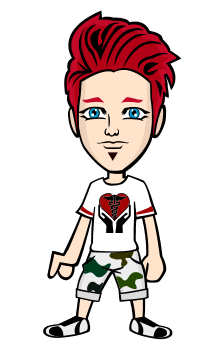Japanese animation began in the early 20th century, when Japanese filmmakers experimented with the animation techniques also pioneered in France, Germany, the United States and Russia.[12] A claim for the earliest Japanese animation is Katsudō Shashin, an undated and private work by an unknown creator.[20] In 1917, the first professional and publicly displayed works began to appear. Animators such as Ōten Shimokawa and Seitarou Kitayama produced numerous works, with the oldest surviving film being Kouchi'sNamakura Gatana, a two-minute clip of a samurai trying to test a new sword on his target only to suffer defeat.[16][21][22] The 1923 Great Kantō earthquake resulted in widespread destruction to Japan's infrastructure and the destruction of Shimokawa's warehouse, destroying most of these early works.
By the 1930s animation was well established in Japan as an alternative format to the live-action industry. It suffered competition from foreign producers and many animators, such as Noburō Ōfuji and Yasuji Murata, who still worked in cheaper cutout animation rather thancel animation.[23] Other creators, such as Kenzō Masaoka and Mitsuyo Seo, nonetheless made great strides in animation technique; they benefited from the patronage of the government, which employed animators to produce educational shorts and propaganda.[24] The firsttalkie anime was Chikara to Onna no Yo no Naka, produced by Masaoka in 1933.[25][26] By 1940, numerous anime artists' organizations had risen, including the Shin Mangaha Shudan and Shin Nippon Mangaka.[27] The first feature-length animated film was Momotaro's Divine Sea Warriors directed by Seo in 1944 with sponsorship by the Imperial Japanese Navy.[28]
The success of The Walt Disney Company's 1937 feature film Snow White and the Seven Dwarfs profoundly influenced many Japanese animators.[29] In the 1960s, manga artist and animator Osamu Tezuka adapted and simplified many Disney animation techniques to reduce costs and to limit the number of frames in productions. He intended this as a temporary measure to allow him to produce material on a tight schedule with inexperienced animation staff.[30] Three Tales, aired in 1960, was the first anime shown on television. The first anime television series was Otogi Manga Calendar, aired from 1961 to 1964.
The 1970s saw a surge of growth in the popularity of manga, Japanese comic books and graphic novels, many of which were later animated. The work of Osamu Tezuka drew particular attention: he has been called a "legend"[31] and the "god of manga".[32][33] His work – and that of other pioneers in the field – inspired characteristics and genres that remain fundamental elements of anime today. The giantrobot genre (known as "mecha" outside Japan), for instance, took shape under Tezuka, developed into the Super Robot genre under Go Nagai and others, and was revolutionized at the end of the decade by Yoshiyuki Tomino who developed the Real Robot genre. Robot anime like the Gundam and The Super Dimension Fortress Macross series became instant classics in the 1980s, and the robot genre of anime is still one of the most common in Japan and worldwide today. In the 1980s, anime became more accepted in the mainstream in Japan (although less than manga), and experienced a boom in production. Following a few successful adaptations of anime in overseas markets in the 1980s, anime gained increased acceptance in those markets in the 1990s and even more at the turn of the 21st century. In 2002, Spirited Away, a Studio Ghibli production directed by Hayao Miyazakiwon the Golden Bear at the Berlin International Film Festival and in 2003 at the 75th Academy Awards it won the Academy Award for Best Animated Feature.



